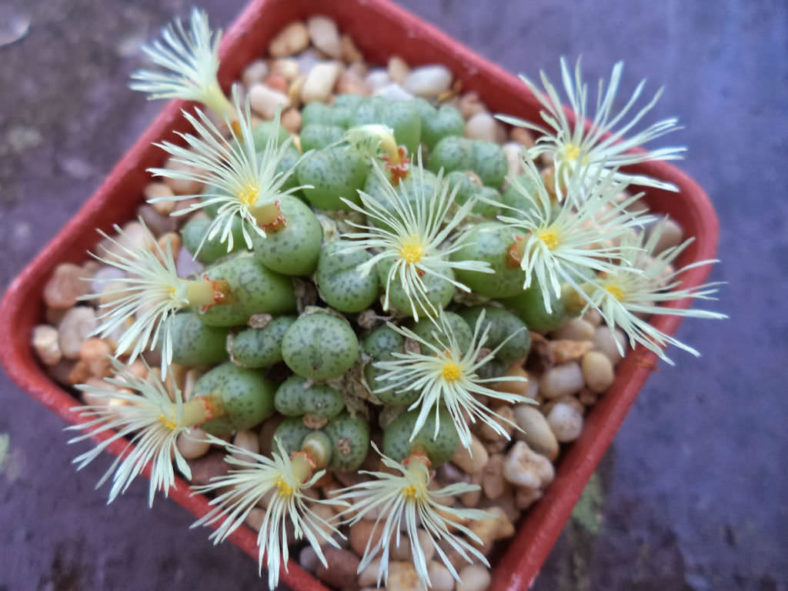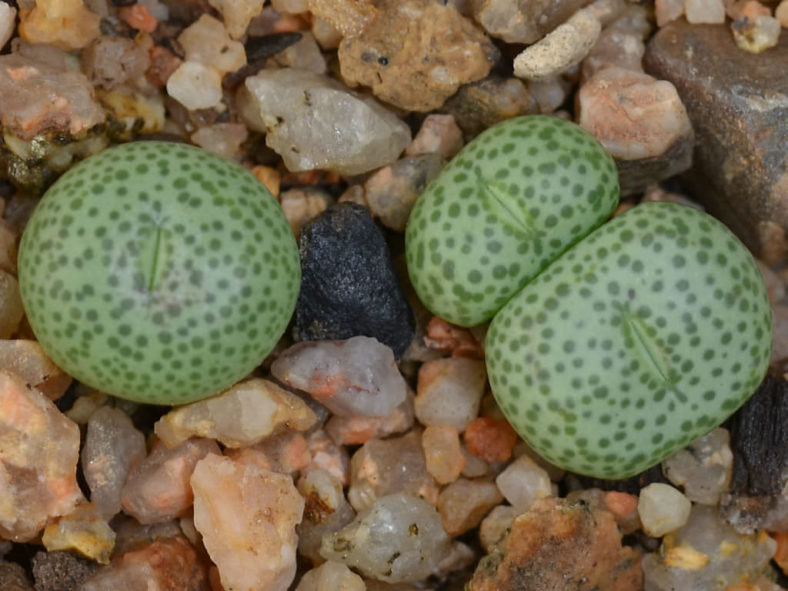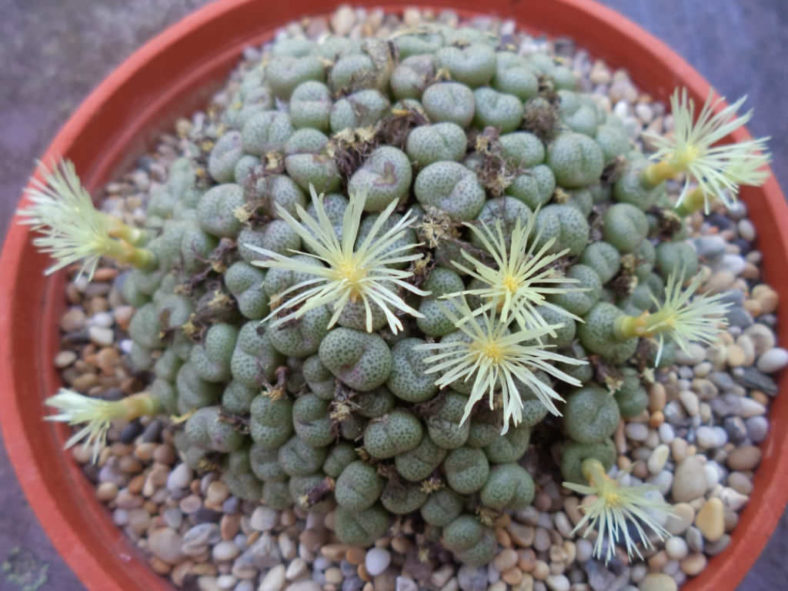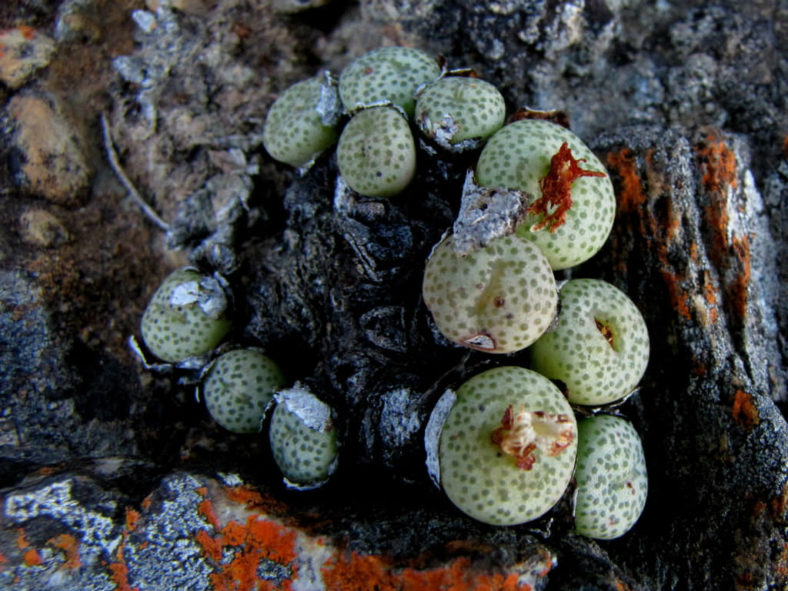Scientific Name
Conophytum truncatum (Thunb.) N. E. Br.
Common Name(s)
Dumpling, Dumplings, Eastern Buttons
Synonym(s)
Conophytum truncatum var. truncatum, Mesembryanthemum truncatum
Scientific Classification
Family: Aizoaceae
Subfamily: Ruschioideae
Tribe: Ruschieae
Genus: Conophytum
Etymology
The specific epithet "truncatum (trunk-AH-tum)" means "maimed, mutilated, having been maimed by having limbs cut off" and refers to the truncated bodies.
Origin
Conophytum truncatum is native to South Africa (eastern parts of the Little Karoo, Western Cape). It is the easternmost species of the genus Conophytum.
Description
Conophytum truncatum is a dwarf succulent that produces many bodies of two fused leaves densely clustered in a big mound. It is a very variable species in size, shape, color, and pattern. The bodies are inverted cone-shaped and can grow up to 1 inch (2.5 cm) tall and nearly equal in diameter, often half that size. They are greyish-green to yellowish-green or reddish, attractively spotted, sometimes streaked or unmarked.
The flowers are nocturnal, scented, white, pale yellow, or pinkish, and appear in fall.

How to Grow and Care for Conophytum truncatum
Light: This succulent needs bright light but does not like too much direct sunlight. To avoid sunburn, place your C. truncatum in a position to receive a few hours of full sun in cooler periods of the day. The plant stretches if it needs more light.
Soil: C. truncatum thrives best in porous soil mixes that allow water to drain away quickly. Use commercial soil specially designed for growing succulents, or make your own mix.
Hardiness: High temperatures are not a problem for his plant, but it can be damaged when the temperatures go below freezing. C. truncatum can withstand temperatures as low as 30 to 50 °F (-1.1 to 10 °C), USDA hardiness zones 10a to 11b.
Watering: When it goes dormant in the spring, C. truncatum requires little or no water. When it begins growing in the fall, it is safe to water deeply, allowing the soil to dry before watering again. During active growth, your plant needs water if the leaves start to wrinkle.
Fertilizing: This small succulent is a light feeder and does not need fertilizer if repotted every two years.
Repotting: The best time to repot C. truncatum is at the beginning of the active growth period, but repotting can be done at almost any time while the plant is actively growing.
Propagation: Like all Conophytums, this plant is easily propagated by division. It can also be grown from seeds. The best time to divide C. truncatum is in late summer or early fall before it begins to break dormancy or after it has flowered. Sow the seeds in fall in a pot with a well-drained soil mix.
Learn more at How to Grow and Care for Conophytum.
Toxicity of Conophytum truncatum
C. truncatum is non-toxic and safe to grow around children and pets.
Links
- Back to genus Conophytum
- Succupedia: Browse succulents by Scientific Name, Common Name, Genus, Family, USDA Hardiness Zone, Origin, or cacti by Genus
Photo Gallery
Click on a photo to see a larger version.


